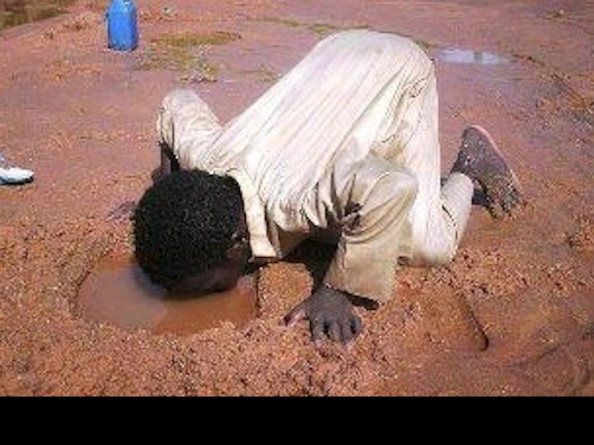From
The Anglo-Egyptian Sudan: a compendium prepared by the officers of the Sudan Government. Edited by Count Gleichen Volume 1, 1905
Text was originally scanned- some spelling mistakes may exist...
The Bisharin
The Bisharin inhabit the desert bounded on the north, roughly,
by the Alagi and its tributaries, on the south by the Atbara, on the
east by the Red Sea from Shalatein to J. Asotriba, and thence by a Hne
joining Mitateb or Umbeiba on the Atbara, and on the west by the Nile
from the mouth of the Atbara to Abu Hamed, and thence by the old trade
route from Abu Hamed to Korosko.
The Ababda and Bisharin formerly lived a good deal further
south in the districts now occupied by the Hadendoas; both tribes moved
northwards probably about 100 years ago.
The Ababda by their move north, came into a more civilised
country. Their Sheikhs, through the transport needed on the Korosko—Abu
Hamed road, came into touch with the Government and acquired at this
time great wealth, and with wealth, their numbers increased, whilst the
Bisharin of the hills, left far behind as regards progressiveness, soon
came to be despised by them.
The Bisharin claim descent from Bishar, the son of Kahl, who
was also the father of Abad and Amar, from whom the Ababda and Amarar
are said to have sprung.
Kahl is said to have been descended from Zubeir Ibn El Awam,*
whose wife was a sister of Abbas, uncle of the Prophet. They maintain,
therefore, that they are descended from the noble Koreish Tribe. In the
genealogy of the tribe, the three principal ancestors are Kahl, Bishar,
and Ali Jalan; on this all accounts seem to agree. The present
generation of Sheikhs is generally said to be the ninth or tenth from
Ali Jalan.
The descendants of Kahl most likely originally inhabited part
of the district now occupied by the Hadendoas, the Bisharin, and Ababda,
as stated above, having latterly moved northwards.
The Bisharin are divided into two great families, the Um Ali
and Um Naji. The former live in the north, the latter in the south, of
their country. Both sections are named after the wives of Ali Jalan, the
great grandson of Bishar, who had the following sons :—
Ali .. Shanatir Amer . Hamedor Aliab. Shantirab. Amrab. Hamedorab. Hanr . Eira . Nafi . Mansur
Hanr. Eireiab. Nafab. Mansurab.
Boundaries of Bisharin.
Aliab.— The Aliab, who are far more numerous and wealthy than
any of the Um Ali or Um Naji tribes, are divided into the following
sub-tribes : Koatil, Mallak, Hamedomerab, Kurbeilab, and Balgab.
The first three named are sometimes classed together and known as the Sararab, on account of their near common ancestry.
The Sheikh of the Koatil has for two generations been the
representative Sheikh of these three families ; before this the
Sheikhship was with the Hamedomerab.
Sub-tribes of the Aliab.
Koatil.— The Koatil, under Sheikh Isa Abdalla, are a small tribe, and poor. They live at Meshushenai and Terfaui.
Hamedomerab. —Sheikh Mohammed Wad Kurab. This, again, is a small tribe, owning few camels, but good flocks of sheep and goats. Wadi Meisa, at the head of which is Bir Meisa, is where most
of the tribe are to be found during the summer. Their two wells are
Meisa and Didaut, close together in the small hills north of the Elba
red granite range.
Mallak.— Sheikh Isa Shingeirab. The Mallak, the third Sararab
tribe, is by far the richest, and own many camels, and of a breed which
is famous among all the neighbouring tribes. The Mallak own many
wells.
Balgab.— The next of the Aliab tribes is the Balgab (Isa
Abdalla), who live in the hills about Is. They have never, since the
time of Abdalla, the father of Isa, had a representative Sheikh, but
have always been represented by the Sheikh of the Sararab. They have good herds of camels, sheep, and goats. They do not
frequent the Aswan market as much as the other Aliab sub-tribes, but
they sell a great deal to merchants who come from there, and buy much of
their corn in good
* In spite of their claim to be of Semitic origin, the
Bisharin are not true Arabs and are of Hamitic descent,...
Compensation for murder or wounds.
The traditional "diia" or compensation for loss of life
among these Arabs is: for a man, 50 male and 50 female camels; for women
or children, or loss of legs, arms, eyes, 25 male and 25 female camels.
Wounds are assessed according to their gravity. The cause in
which murders are committed, or a wound is received, is always taken
into consideration. The above amounts are the limit of compensation.
Get your own copy of this 412 page book.
This book is available for about $20.00 CAN from the University of Toronto print on demand book publishing program. Search
here to order... Or get it for about $10 from the
University of Pittsburgh.






























